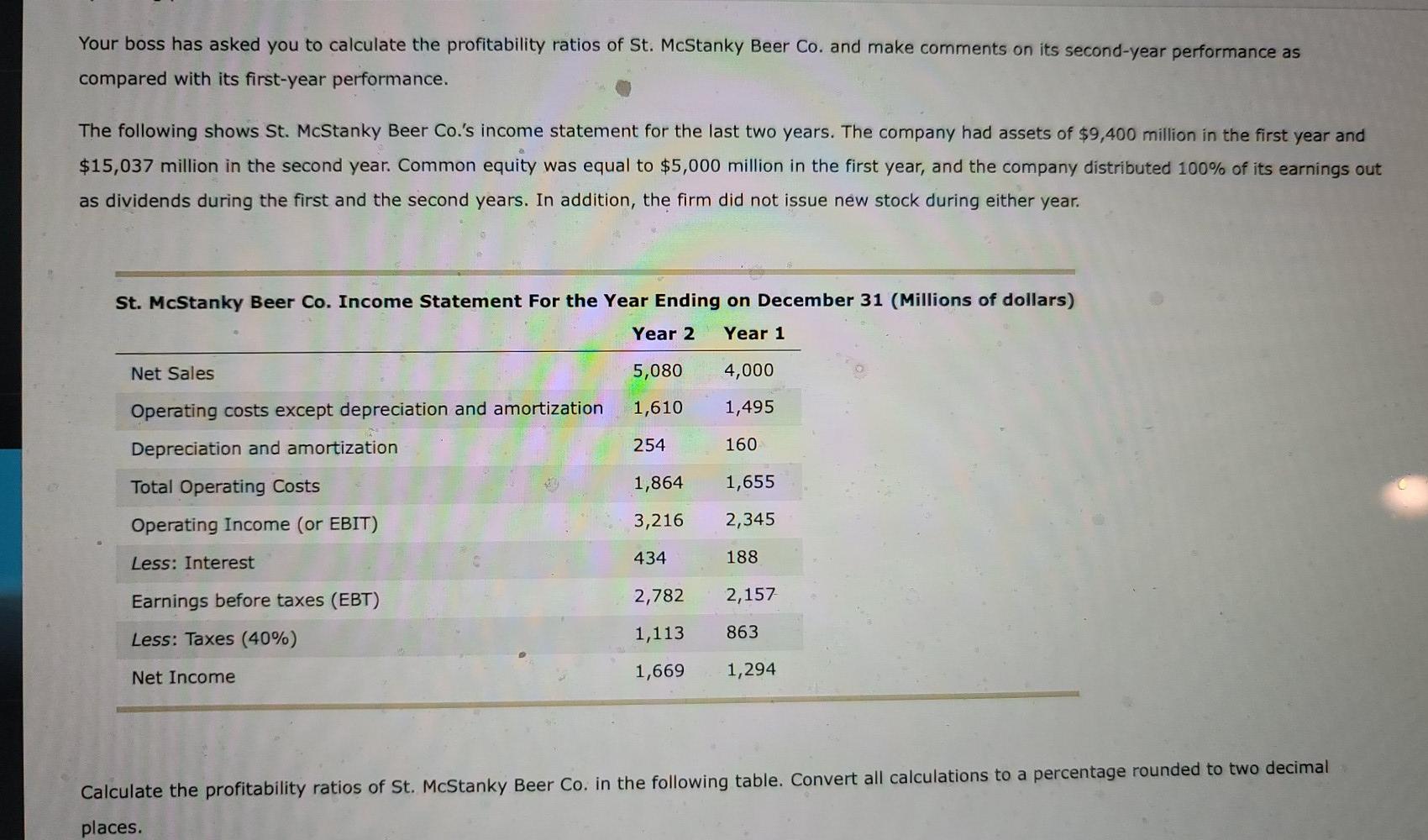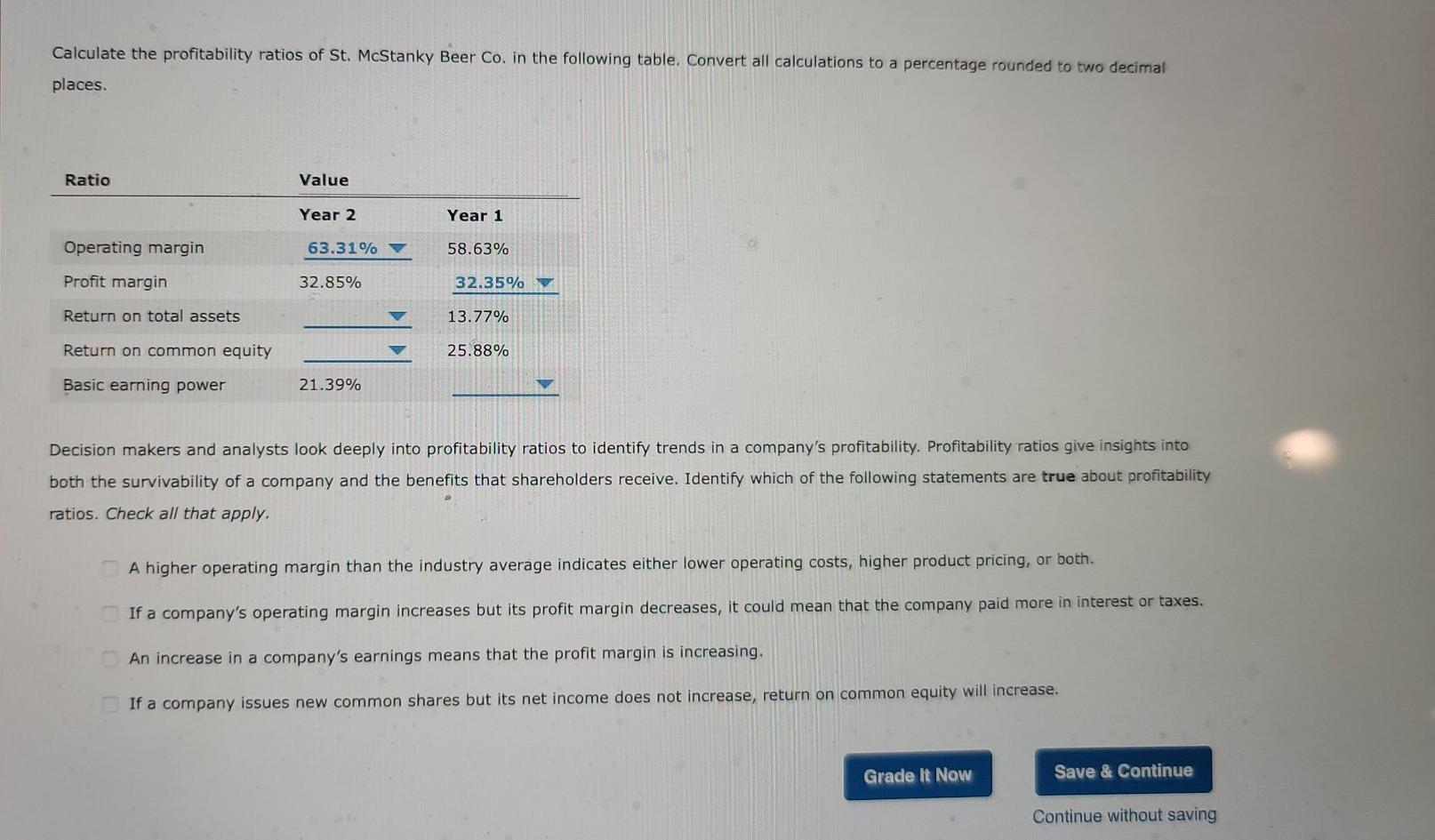Answered step by step
Verified Expert Solution
Question
1 Approved Answer
Your boss has asked you to calculate the profitability ratios of St. McStanky Beer Co. and make comments on its second-year performance as compared with


Your boss has asked you to calculate the profitability ratios of St. McStanky Beer Co. and make comments on its second-year performance as compared with its first-year performance. The following shows St. McStanky Beer Co.'s income statement for the last two years. The company had assets of $9,400 million in the first year and $15,037 million in the second year. Common equity was equal to $5,000 million in the first year, and the company distributed 100% of its earnings out as dividends during the first and the second years. In addition, the firm did not issue new stock during either year. St. McStanky Beer Co. Income Statement For the Year Ending on December 31 (Millions of dollars) Year 2 Year 1 Net Sales 5,080 4,000 Operating costs except depreciation and amortization 1,610 1,495 Depreciation and amortization 254 160 Total Operating Costs 1,864 1,655 Operating Income (or EBIT) 3,216 2,345 Less: Interest 434 188 2,782 2,157 Earnings before taxes (EBT) Less: Taxes (40%) 1,113 863 Net Income 1,669 1,294 Calculate the profitability ratios of St. McStanky Beer Co. in the following table. Convert all calculations to a percentage rounded to two decimal places. Calculate the profitability ratios of St. McStanky Beer Co. in the following table. Convert all calculations to a percentage rounded to two decimal places Ratio Value Year 2 Year 1 Operating margin 63.31% 58.63% Profit margin 32.85% 32.35% Return on total assets 13.77% Return on common equity V 25.88% Basic earning power 21.39% Decision makers and analysts look deeply into profitability ratios to identify trends in a company's profitability. Profitability ratios give insights into both the survivability of a company and the benefits that shareholders receive. Identify which of the following statements are true about profitability ratios. Check all that apply. A higher operating margin than the industry average indicates either lower operating costs, higher product pricing, or both. If a company's operating margin increases but its profit margin decreases, it could mean that the company paid more in interest or taxes. An increase in a company's earnings means that the profit margin is increasing. If a company issues new common shares but its net income does not increase, return on common equity will increase. Grade It Now Save & Continue Continue without saving
Step by Step Solution
There are 3 Steps involved in it
Step: 1

Get Instant Access to Expert-Tailored Solutions
See step-by-step solutions with expert insights and AI powered tools for academic success
Step: 2

Step: 3

Ace Your Homework with AI
Get the answers you need in no time with our AI-driven, step-by-step assistance
Get Started


